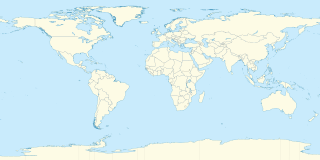 W
WThe 49th parallel north is a circle of latitude that is 49° north of Earth's equator. It crosses Europe, Asia, the Pacific Ocean, North America, and the Atlantic Ocean.
 W
WThe Fairfax Line was a surveyor's line run in 1746 to establish the limits of the "Northern Neck land grant" in colonial Virginia.
 W
WThe international border states are those states in the U.S. that border either Canada, Mexico, Cuba, or Russia. With a total of eighteen of such states, thirteen lie on the U.S.–Canada border, four on the U.S.–Mexico border, and one consists of a maritime borders with Cuba and The Bahamas.
 W
WThe Mason–Dixon line, also called the Mason and Dixon line or Mason's and Dixon's line, is a demarcation line between four U.S. states, forming part of the borders of Pennsylvania, Maryland, Delaware, and West Virginia. It was surveyed between 1763 and 1767 by Charles Mason and Jeremiah Dixon in the resolution of a border dispute involving Maryland, Pennsylvania, and Delaware in Colonial America. The dispute had its origins almost a century earlier in the somewhat confusing proprietary grants by King Charles II to Lord Baltimore (Maryland) and William Penn (Pennsylvania).
 W
WThe parallel 36°30′ north is a circle of latitude that is 36 and one-half degrees north of the equator of the Earth. This parallel of latitude is particularly significant in the history of the United States as the line of the Missouri Compromise, which was used to divide the prospective slave and free states west of the Mississippi River, with the exception of Missouri, which is mostly north of this parallel.
 W
WBecause of its unique history, many of the boundaries of the political divisions of the United States were artificially constructed. Therefore, many U.S. states have straight lines as boundaries, especially in the West. However, there are many partial state boundaries, particularly in the Midwest, Northeast, and South, that are defined by rivers; in fact, only five states completely lack any borders defined by rivers or waterways.
 W
WThe United States of America was created on July 4, 1776, with the Declaration of Independence of thirteen British colonies in North America. In the Lee Resolution of July 2, 1776, the colonies resolved that they were free and independent states. The union was formalized in the Articles of Confederation, which came into force on March 1, 1781, after being ratified by all 13 states. Their independence was recognized by Great Britain in the Treaty of Paris of 1783, which concluded the American Revolutionary War. This effectively doubled the size of the colonies, now able to stretch west past the Proclamation Line to the Mississippi River. This land was organized into territories and then states, though there remained some conflict with the sea-to-sea grants claimed by some of the original colonies. In time, these grants were ceded to the federal government.